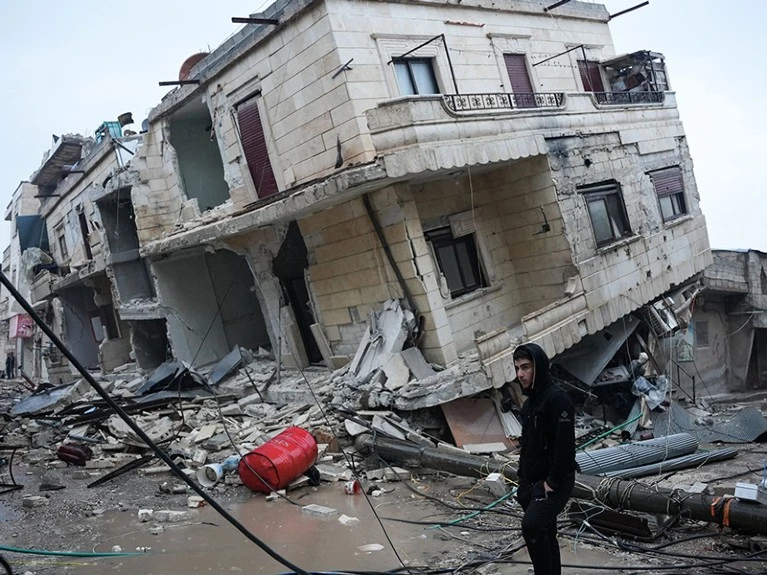In a rare development, a 5.3-magnitude earthquake hit Telangana’s Mulugu district early Wednesday morning, December 4, 2024. The tremors were felt as far as Hyderabad and parts of the neighboring Andhra Pradesh, and people were in a tizzy. According to NCS, the earthquake occurred at 7:27 AM IST, and its epicentre was located in Mulugu district at a depth of 40 kilometers.
Rare in Telangana
Telangana does not experience significant tectonic activities, as the state falls in Zone II of the seismically less active area. This earthquake, therefore is a rare incident in this region. To be cautious, the administration has initiated investigation processes, however, till now, no deaths or any serious damage to property are reported.
NCS tweeted in its post on X :
“EQ of M: 5.3, On: 04/12/2024 07:27:02 IST, Lat: 18.44 N, Long: 80.24 E, Depth: 40 Km, Location: Mulugu, Telangana.”
The quake created panic waves among the residents, but experts and local officials have asked people to remain calm and move away from unsafe structures to open spaces if tremors strike again.
Tremors Reach Maharashtra
The effect of the earthquake was not limited to Telangana. Shocks were experienced in a few districts of adjacent Maharashtra such as Nagpur, Gadchiroli and Chandrapur. Even though the intensity of the shocks receded with distance, it was enough to raise alarms for the residents. Collector Vinay Gowda of Chandrapur said that the people need not worry, asking them to remain vigilant and step out to open places if more tremors come.
Light tremors are usually experienced within a 200-300 km radius of an earthquake’s epicenter. Local meteorological sources confirmed mild shocks in Nagpur and Gadchiroli, thus showing the quake’s regional impact.
Historical Context and Seismic Zones in India
India is categorized into four seismic zones: Zone II, Zone III, Zone IV, and Zone V. The highest activity of seismicity occurs in Zone V, and the least prone to seismicity is Zone II. Telangana falls under Zone II; however, the risk cannot be ruled out completely. About 59% of India’s area is seismically prone, with the highest intensity risks in Zones IV and V.
A social media user by the name “Telangana Weatherman” commented that this was the strongest earthquake recorded in Telangana in the last 20 years. The post pointed out how the whole state, including the capital Hyderabad, felt the tremors, making it rare for such seismic events to occur in the region.
Safety Measures and Public Response
To respond to the earthquake, the government and scientists warned the people with advisories. People were told to stay cautious, keep away from congested and dangerous buildings, and move into open grounds when any aftershock takes place.
The Chandrapur district administration informed safety instructions and emergency procedure along with proper preparedness for citizens of areas falling within Telangana’s state boundary. It minimizes panic while still experiencing a shock after all that occurred.
Recent Earthquakes in India
While the Telangana earthquake did gain considerable attention, it is one in a long line of seismic activities occurring across India over the past few weeks. On November 28, a 5.8-magnitude earthquake was reported in Jammu and Kashmir with its epicenter in Afghanistan. Although no casualties were reported, the quake did remind people of the region’s vulnerability to seismic activity. Similarly, on November 30, a minor earthquake of 2.9 on the Richter scale hit Assam’s Karbi Anglong district, with no significant damage.
These events are part of India’s varied seismic landscape, where tremors of different magnitudes occur regularly, though the impact varies from region to region.
Telangana Earthquake in Perspective
Telangana’s quake is a wake-up call to a region not accustomed to such incidents. Though there is no news of casualties or major damages, it does remind of preparedness even in low-intensity zones. The episode reminds that no region can be totally exempt from seismic threats, and safety measures are needed to tackle emergencies.
With rapid urbanization of India, earthquake-resistant infrastructure and public awareness campaigns cannot be more emphasized. Such events have called for proactive planning and education in the face of natural disasters.
Conclusion
It was a 5.3-magnitude earthquake that struck Telangana; not very often do the earth’s movements come in a morning like this for people in the state and outside it. It did not claim lives or cause mass destruction, but the jolts brought home a grim reality: the unpredictable nature of natural calamities. It was also an eye-opener to being prepared even in a place like Telangana, where the history of earthquakes has been negligible.
As the authorities keep on assessing the situation and analyzing the data from the quake, they ask the residents to stay alert and keep safety above all. With timely updates and clear communication from experts, Telangana has demonstrated how prompt action and public cooperation can minimize the impact of such unforeseen events.

